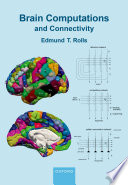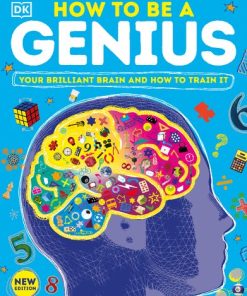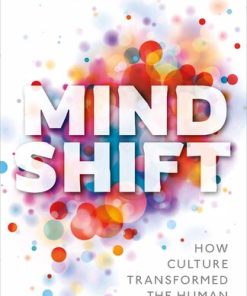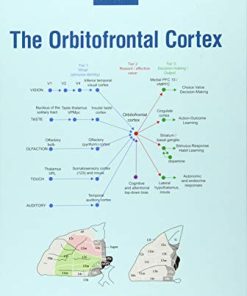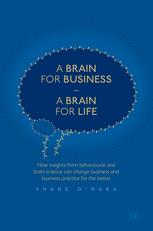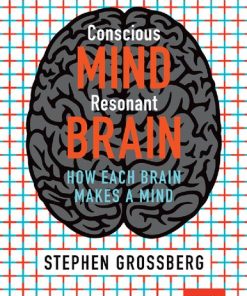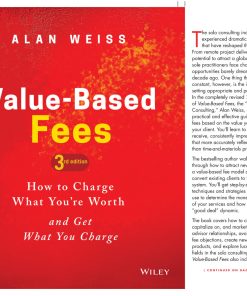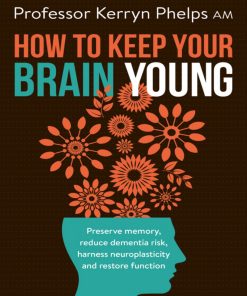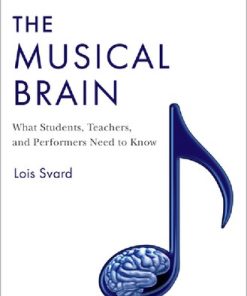(Ebook PDF) Brain Computations What and How 1st edition by Edmund Rolls 0192644475 9780192644473 full chapters
$50.00 Original price was: $50.00.$25.00Current price is: $25.00.
Brain Computations: What and How 1st edition by Edmund T. Rolls – Ebook PDF Instant Download/DeliveryISBN: 0192644475, 9780192644473
Full download Brain Computations: What and How 1st edition after payment
Product details:
ISBN-10 : 0192644475
ISBN-13 : 9780192644473
Author: Edmund T. Rolls
In order to understand how the brain works, it is essential to know what is computed by different brain systems, and how those computations are performed. Brain Computations: What and How elucidates what is computed in different brain systems and describes current computational approaches and models of how each of these brain systems computes. This approach has enormous potential for helping us understand ourselves better in health. Potential applications of this understanding are to the treatment of the brain in disease, as well as to artificial intelligence, which will benefit from knowledge of how the brain performs many of its extraordinarily impressive functions. Pioneering in its approach, Brain Computations: What and How will be of interest to all scientists interested in brain function and how the brain works, whether they are from neuroscience, or from medical sciences including neurology and psychiatry, or from the area of computational science including machine learning and artificial intelligence, or from areas such as theoretical physics.
Brain Computations: What and How 1st Table of contents:
1 Introduction
1.1 What and how the brain computes: introduction
1.2 What and how the brain computes: plan of the book
1.3 Neurons in the brain, and their representation in neuronal networks
1.4 A formalism for approaching the operation of single neurons in a network
1.5 Synaptic modification
1.6 Long term potentiation and long term depression as models of synaptic modification
1.7 Information encoding by neurons, and distributed representations
1.8 Neuronal network approaches versus connectionism
1.9 Introduction to three neuronal network architectures
1.10 Systems level analysis of brain function
1.11 Brodmann areas
1.12 Introduction to the fine structure of the cerebral neocortex
2 The ventral visual system
2.1 Introduction and overview
2.2 What: V1 – primary visual cortex
2.3 What: V2 and V4 – intermediate processing areas in the ventral visual system
2.4 What: Invariant representations of faces and objects in the inferior temporal visual cortex
2.5 How the computations are performed: approaches to invariant object recognition
2.6 Hypotheses about how the computations are performed in a feature hierarchy approach to for invariant object recognition
2.7 VisNet: a model of how the computations are performed in the ventral visual system
2.8 Further approaches to invariant object recognition
2.9 Visuo-spatial scratchpad memory, and change blindness
2.10 Different processes involved in different types of object identification
2.11 Top-down attentional modulation is implemented by biased competition
2.12 Highlights on how the computations are performed in the ventral visual system
3 The dorsal visual system
3.1 Introduction, and overview of the dorsal cortical visual stream
3.2 Global motion in the dorsal visual system
3.3 Invariant object-based motion in the dorsal visual system
3.4 What is computed in the dorsal visual system_ visual coordinate transforms
3.5 How visual coordinate transforms are computed in the dorsal visual system
4 The taste and flavour system
4.1 Introduction and overview
4.2 Taste and related pathways: what is computed
4.3 Taste and related pathways: how the computations are performed
5 The olfactory system
5.1 Introduction
5.2 What is computed in the olfactory system
5.3 How computations are performed in the olfactory system
6 The somatosensory system
6.1 What is computed in the somatosensory system
6.2 How computations are performed in the somatosensory system
7 The auditory system
7.1 Introduction, and overview of computations in the auditory system
7.2 Auditory Localization
7.3 Ventral and dorsal cortical auditory pathways
7.4 The ventral cortical auditory stream
7.5 The dorsal cortical auditory stream
7.6 How the computations are performed in the auditory system
8 The temporal cortex
8.1 Introduction and overview
8.2 Middle temporal gyrus and face expression and gesture
8.3 Semantic representations in the temporal lobe neocortex
8.4 The mechanisms for semantic learning in the human anterior temporal lobe
9 The hippocampus, memory, and spatial function
9.1 Introduction and overview
9.2 What is computed in the hippocampus
9.3 How computations are performed in the hippocampal system
9.4 Tests of the theory of hippocampal cortex operation
9.5 Comparison with other theories of hippocampalfunction
10 The parietal cortex, spatial functions, and navigation
10.1 Introduction and overview
10.2 Precuneus and medial area 7
10.3 Navigation: What computations are performed in the parietal and related cortex
10.4 How navigation is performed
11 The orbitofrontal cortex, amygdala, reward value, and emotion
11.1 Introduction and overview
11.2 The topology and connections of the orbitofrontal cortex
11.3 What is computed in the orbitofrontal cortex
11.4 How the computations are performed in the orbitofrontal cortex
11.5 Highlights: what are the special computational roles of the orbitofrontal cortex in reward, emotion, and decision-making?
12 The cingulate cortex
12.1 Introduction to and overview of the cingulate cortex
12.2 Anterior Cingulate Cortex
12.3 Mid cingulate cortex, the cingulate motor area, and action–outcome learning
12.4 The posterior cingulate cortex
12.5 How the computations are performed by the cingulate cortex
12.6 Synthesis and conclusions
13 The motor cortical areas
13.1 Introduction and overview
13.2 What is computed in different cortical motor related areas
13.3 The mirror neuron system
13.4 How the computations are performed in motor cortical and related areas
14 The basal ganglia
14.1 Introduction and overview
14.2 Systems level architecture of the basal ganglia
14.3 What computations are performed by the basal ganglia?
14.4 How do the basal ganglia perform their computations?
14.5 Comparison of computations for selection in the basal ganglia and cerebral cortex
15 Cerebellar cortex
15.1 Introduction
15.2 Architecture of the cerebellum
15.3 Modifiable synapses of parallel fibres onto Purkinje cell dendrites
15.4 The cerebellar cortex as a perceptron
15.5 Highlights: differences between cerebral and cerebellar cortex microcircuitry
16 The prefrontal cortex
16.1 Introduction and overview
16.2 Divisions of the lateral prefrontal cortex
16.3 The lateral prefrontal cortex and top-down attention
16.4 How the computations are performed in the prefrontal cortex
17 Language and syntax in the brain
17.1 Introduction and overview
17.2 What is computed in different brain systems to implement language
17.3 Hypotheses about how semantic representations are computed
17.4 A neurodynamical hypothesis about how syntax is computed
18 Cortical attractor dynamics and connectivity, stochasticity, psychiatric disorders, and aging
18.1 Introduction and overview
18.2 The noisy cortex: stochastic dynamics, decisions, and memory
18.3 Attractor dynamics and schizophrenia
18.4 Attractor dynamics and obsessive compulsive disorder
18.5 Depression and attractor dynamics
18.6 Attractor stochastic dynamics, aging, and memory
18.7 High blood pressure, reduced hippocampal functional connectivity, and impaired memory
18.8 Brain development, and structural differences in the brain
19 Computations by different types of brain, and by artificial neural systems
19.1 Introduction and overview
19.2 Computations that combine different computational systems in the brain to produce behaviour
19.3 Brain computation compared to computation on a digital computer
19.4 A comparison of brain computation with learning in artificial deep learning networks using error backpropagation
19.5 Reinforcement Learning
19.6 Levels of explanation, and the mind brain problem
19.7 Levels of explanation, and levels of investigation
19.8 Brain-Inspired Intelligence
19.9 Brain-Inspired Medicine
19.10 Primates including humans have a different systems-level organisation of many brain systems co
People also search for Brain Computations: What and How 1st:
brain computations what and how pdf
what part of the brain is responsible for computations
what part of the brain controls computations
seven computations of the social brain
how many calculations does the brain make
Tags:
Brain Computations,What,How,Edmund Rolls
You may also like…
Biology and other natural sciences - Human Biology
Brain Computations and Connectivity Edmund T. Rolls 2nd edition
Children's Books - Education & Reference
How to Be a Genius : Your Brilliant Brain and How to Train It, New Edition John Woodward
Uncategorized
Business & Economics
Medicine - Neuroscience
Conscious Mind, Resonant Brain: How Each Brain Makes a Mind 1st Edition
Business & Economics - Management & Leadership
Value-Based Fees: How to Charge What You’re Worth and Get What You Charge 3rd Edition Alan Weiss





